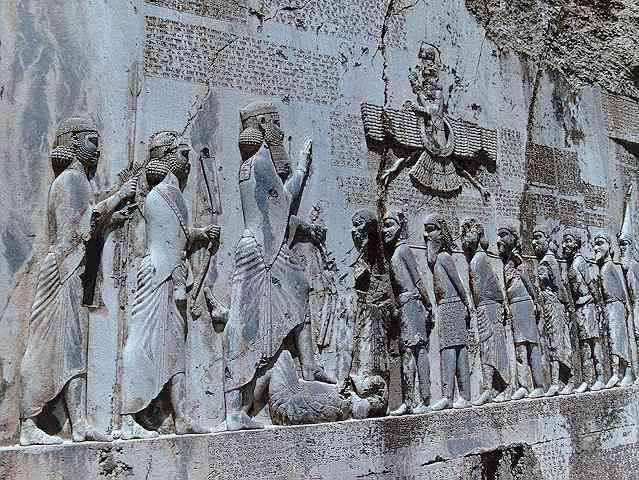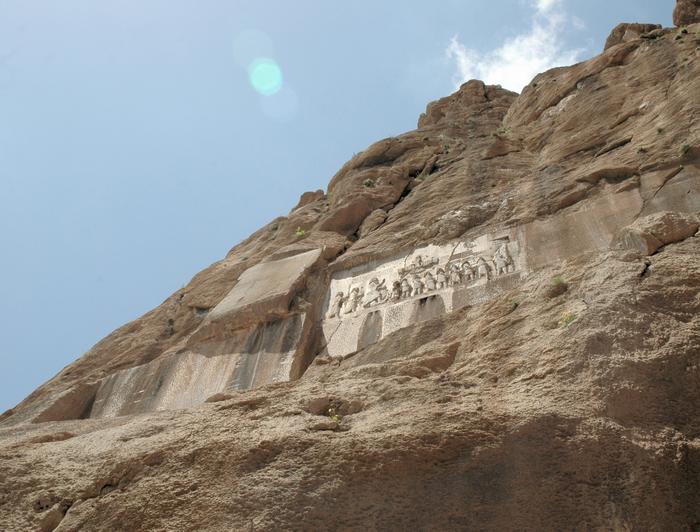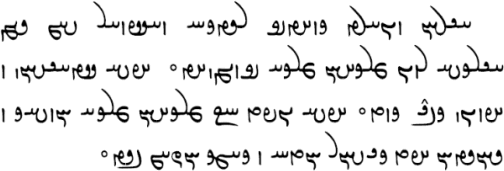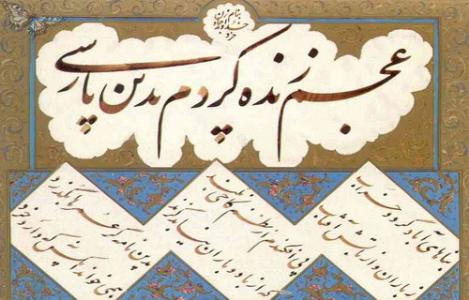History of Persian Language
The history of the Persian language is divided into three eras: Old Persian (ca. 525 BC- 300 BC), Middle Persian (c. 300 BC- 800 AD), and Modern Persian (800 AD to the present day). The Persian language has been written with a number of different scripts during its history including the Old Persian Cuneiform (e.g. Bistoon inscription of the Achaemenid Darius I) and Middle Persian (Pahlavi) alphabets (e.g. Husrō ī kavādān ud rēdak-ē (خسرو قبادان و ریدک) written from the period of the Sassanian king Khosrow). After the coming of Islam in 642 AD, Persians adapted the Arabic alphabet to develop the contemporary Persian alphabet. The Arabic alphabet has 28 characters, but Iranians added another four letters in it to arrive at the current 32 Persian letters. Modern Persian appeared during the 9th century after this adoption of the alphabet and the borrowing of many Arabic words.
Old Persian
The Bistun Inscription is a multi-lingual inscription located on Mount Behistun in the Kermanshah city of Iran. This UNESCO World Heritage Site is authored by Darius the Great as king of the Persian Empire at 6th century BC.


The inscription includes three versions of the same text, written in three different cuneiform script languages: Old Persian, Elamite, and Babylonian (a later form of Akkadian). The inscription is approximately 15 meters high by 25 meters wide and 100 meters up a limestone cliff from an ancient road connecting the capitals of Babylonia and Media (Babylon and Ecbatana, respectively). The Old Persian text contains 414 lines in five columns; the Elamite text includes 593 lines in eight columns, and the Babylonian text is in 112 lines. Full translation of the Bistun Inscription can be found in the below link: https://en.wikipedia.org/wiki/Full_translation_of_the_Behistun_Inscription
Middle Persian
Husrō ī kavādān ud rēdak-ē (خسرو قبادان و ریدک)
The Pahlavi text entitled “Husraw i Kawadan ud Redag-e “Khosrow, son of Kawad, and a page” is a good source about the education of the Sasanian nobility and their courtly manners. “This dialogical narrative tells the story of a young servant at the court of the Sasanian king Khosrow I (531-579 A.D.), who succeeded in regaining his hierarchic rank because of both his wisdom and his courage. “

For more information, please refer to “Husraw i Kawadan ud Redag-e” By: Azarnouche S (2013), ISBN: 978-2-910640-35-4
http://www.peeters-leuven.be/boekoverz.asp?nr=9326
Modern Persian

This poem is from Shahnameh written by Ferdowsi (940-1020). In this poem, Ferdowsi states that he has spent 30 years writing his book by which he has revived Persian language (referring to the fact that Arabic became the official language of Persia one century after the coming of Islam to Persian Empire (in 642 AD) and it remained the official language for two centuries. Then Persian language became the official language and the poets such as Rudaki and Ferdowshi had an important role in reviving the language.
Ferdowsi’s Shahnameh is the most popular and influential national epic in Iran and other Persian-speaking nations. The Persians regard Ferdowsi as the greatest of their poets. For nearly a thousand years they have continued to read and to listen to recitations from his masterwork, the Shahnameh, in which the Persian national epic found its final and enduring form. Though written about 1,000 years ago, this work is as intelligible to the average, modern Iranian.